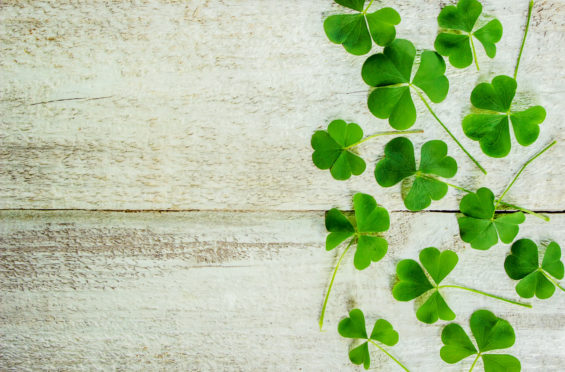
This Sunday marks St Patrick’s Day, with Irish culture celebrated all over the world.
Many Scots will be joining in the celebrations through special events and get-togethers over the weekend.
And no doubt there’ll be a pint of Guinness or two drunk!
Here, we take a look at a few things you may not know about St Paddy’s…
Green might be a big colour on St Patrick’s Day but historians reckon celebrations were originally associated with the colour blue.
The hue can still be seen on ancient Irish flags.
It’s thought that the shift to green happened because of Ireland’s nickname “The Emerald Isle,” the green in the Irish flag and the shamrock, or clover.
Green ribbons and shamrocks were worn as early as the 17th century.
Four leaf clovers are obviously a lucky symbol for St Patrick’s Day and legend says that each leaf of the clover has a meaning: Hope, Faith, Love and Luck.
Your odds of finding a four-leaf clover are about 1 in 10,000.
Born in Roman Britain, St Patrick is not actually Irish. In fact, it’s widely believed he was born in Scotland.
At 16, he was taken to Ireland as a slave and escaped six years later to become a priest. Following a vision, he returned to Ireland to Christianise the Irish people.
Legend says that St Patrick banished all the snakes from Ireland but the chances of survival of snakes in the country are minimal because of the cold conditions of the region, and Ireland’s isolation from mainland Europe.
However, some say that the snakes was a symbol of the pagans he converted to Christianity.
Guinness sales almost double on St Patrick’s Day, compared to the regular days when 5.5 million pints of it are sold.
There are plenty of hangovers the day afterwards, with many turning to rescue remedies.
This includes TriBeCa in Glasgow’s Merchant City, who have concocted a drink boasting energy boosting ingredients including Broccoli, Mango, Banana, Pineapple, Spinach, Cucumber and Almond milk to help your immune system battle the effects of the morning after.
’Wetting the shamrock’ was historically popular, especially in Ireland.
At the end of the celebrations, a shamrock is put into the bottom of a cup, which is then filled with whiskey, beer, or cider.
It is then drunk as a toast to St Patrick, Ireland, or those present. The shamrock would either be swallowed with the drink or taken out and tossed over the shoulder for good.

Enjoy the convenience of having The Sunday Post delivered as a digital ePaper straight to your smartphone, tablet or computer.
Subscribe for only £5.49 a month and enjoy all the benefits of the printed paper as a digital replica.
Subscribe